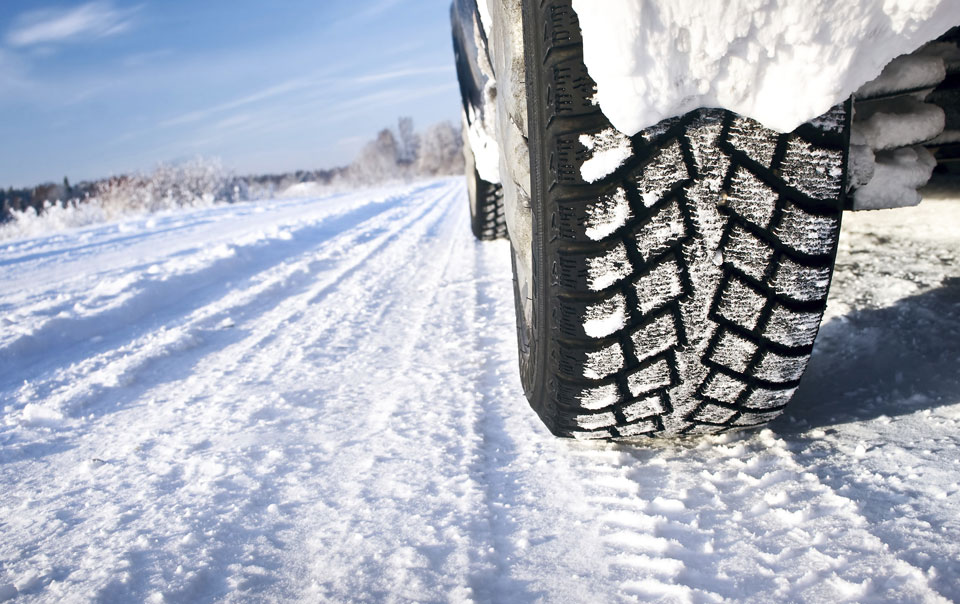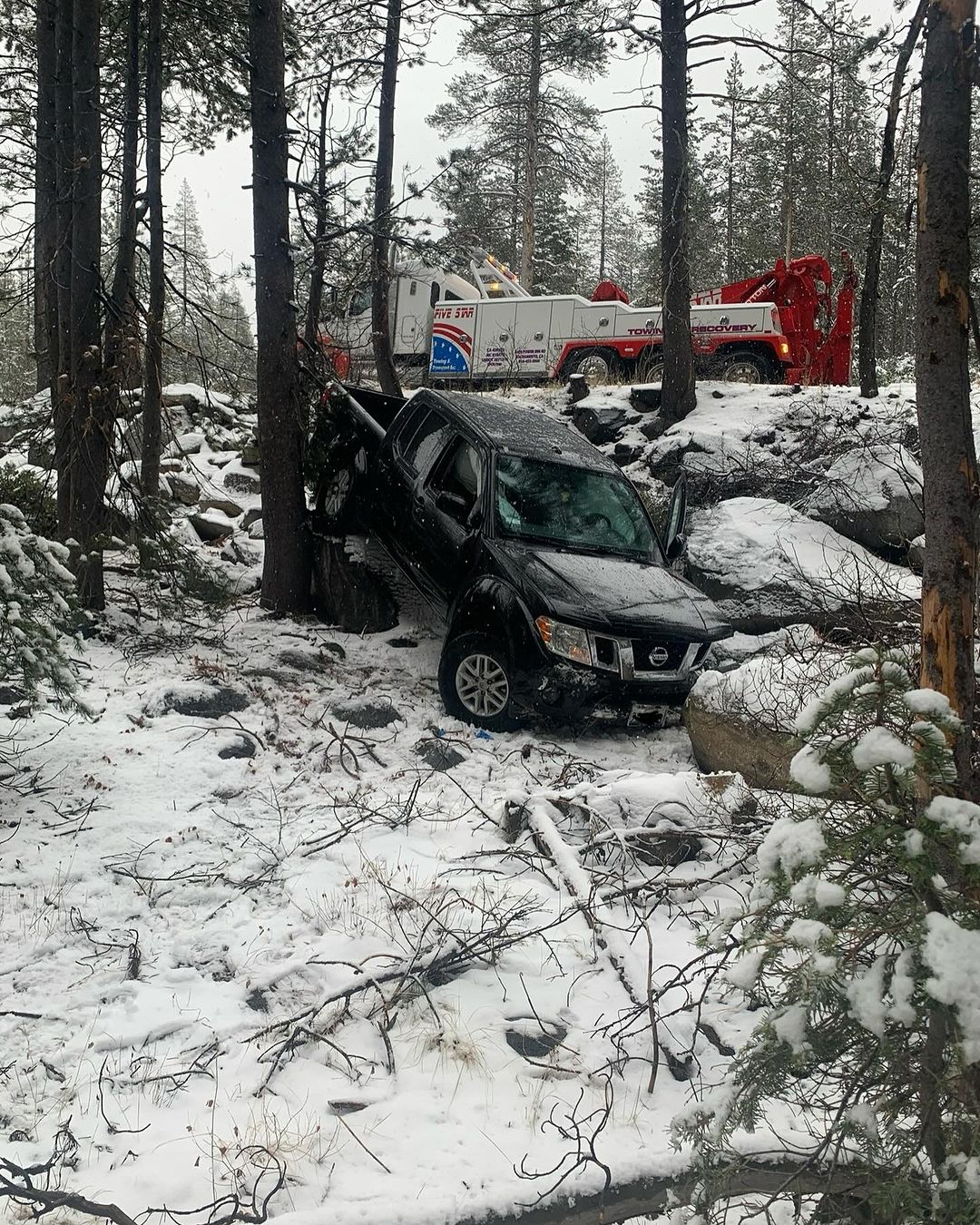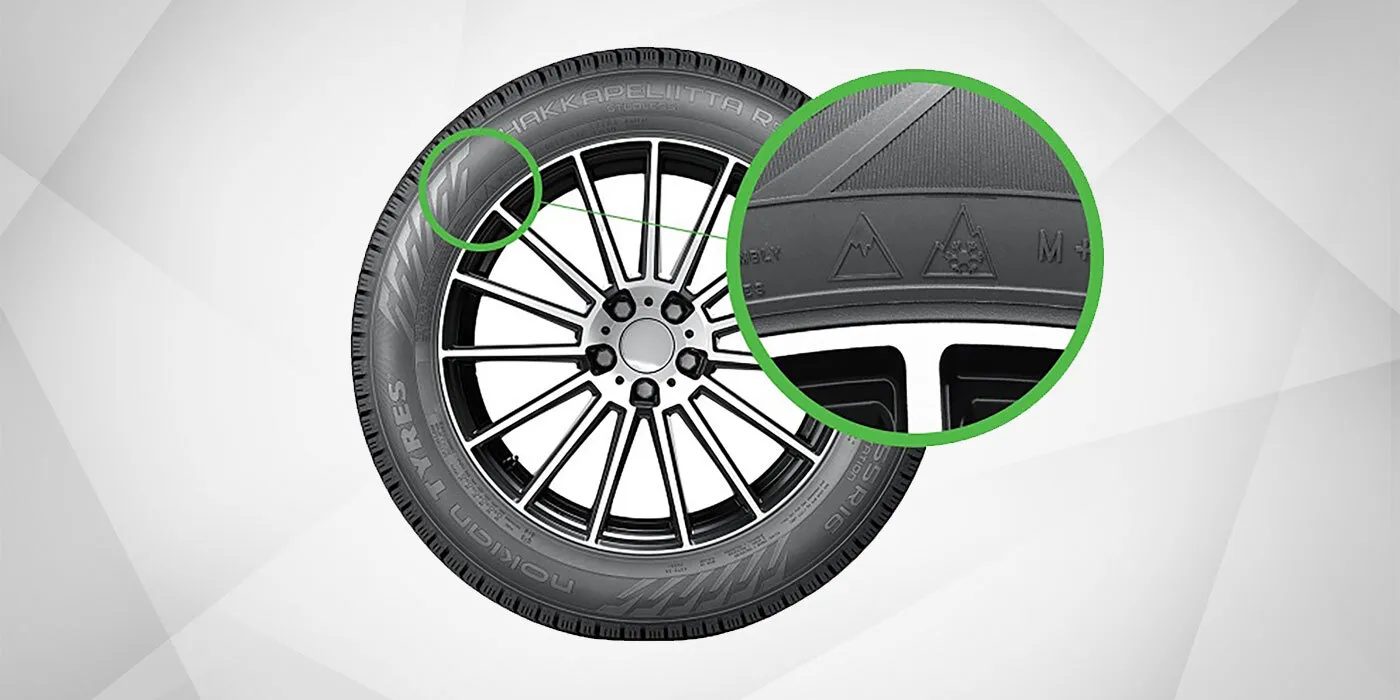
Using the proper tires is essential for safe driving in snowy conditions. In North America, determining if a tire is suitable for winter use can be challenging, if not impossible, and the new Ice Grip emblem seeks to address that. It shows that a tire has undergone testing to demonstrate safe levels of traction on bare ice when displayed on the tire’s sidewall.
- Related: Driving On Snow, For Dummies

As more people venture into the world of skiing, many come from places that never receive snowfall and do not know how or the type of setup they need. There were hundreds of crashes in Tahoe last season, most of which were people trying to get to the mountains in cars with tires not designed for driving on snow and ice. The actual scope of the issue is evident on CHP Truckee’s Instagram, where they post some of the most bizarre collisions and occurrences to inform and caution followers about the circumstances. That said, you most likely aren’t following this page unless you are a serious skier or a Truckee resident. When someone lacks access to knowledge, a small symbol on the sidewall of your tires can either increase or decrease their confidence in their decision to drive in the snow.
There are four different variations of tires:
- All-season Tires: These are standard tires meant to be used in every weather condition. However, they become less grippy below 45 degrees. While they are reasonably priced, they are not the ideal option for winter safety.
- All-Terrain Tires: These are designed for off-road use but provide some efficiency and safety on the road. Although they may have winter capability markings, they fall short of the efficiency of tires made specifically for the winter.
- M+S Tires: Designed for mud and snow, these tires adhere to specific tread design requirements, but they don’t go through a performance test for cold weather. Some states, including California, have legal recognition for them as snow tires, but their efficacy in the winter is questionable.
- Three Peak Mountain Snowflake (3PMSF): These tires exhibit at least 10% more traction than a typical reference tire in a performance test conducted in medium-packed snow. However, comprehensive consumer information is scarce, and their performance in the actual world varies. In winter, they might perform better than regular all-season tires, although it’s unclear by how much.
Before a tire can earn the new Ice Grip emblem, it must pass the ISO 19447 test, established in 2021, which sets stringent criteria for ice performance testing. The process involves pre-watering a polished, flat ice surface an hour before testing. The test environment requires specific temperature conditions: the air temperature should be between 5 to 39 degrees Fahrenheit, measured approximately 3.3 feet above the ice, and the ice should be between 5 to 23 degrees. Optimal testing conditions exclude precipitation, blowing snow, and direct sunlight. For tire conditioning, new tires are initially run for 62 miles on pavement and then for 3 to 6 miles between each test. The test includes a control tire, a Michelin Standard Reference Test Tire, which matches the test vehicle’s tire size and load rating and is inflated according to the vehicle manufacturer’s specifications. The key part of the test involves braking from 15.5 mph to a complete stop, assessing the tire’s grip and safety performance on ice.
